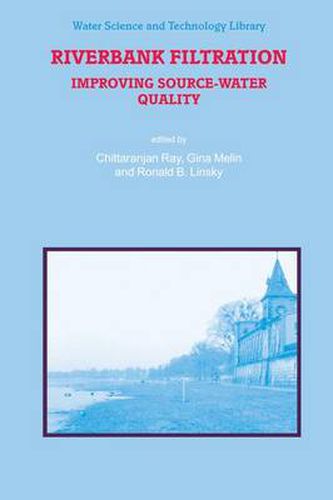Readings Newsletter
Become a Readings Member to make your shopping experience even easier.
Sign in or sign up for free!
You’re not far away from qualifying for FREE standard shipping within Australia
You’ve qualified for FREE standard shipping within Australia
The cart is loading…






This title is printed to order. This book may have been self-published. If so, we cannot guarantee the quality of the content. In the main most books will have gone through the editing process however some may not. We therefore suggest that you be aware of this before ordering this book. If in doubt check either the author or publisher’s details as we are unable to accept any returns unless they are faulty. Please contact us if you have any questions.
Chittaranjan Ray, Ph. D. , P. E. University of Hawaii at Manoa Honolulu, Hawaii, United States Jurgen Schubert, M. Sc. Stadtwerke Dusseldorf AG Dusseldorf, Germany Ronald B. Linsky National Water Research Institute Fountain Valley, California, United States Gina Melin National Water Research Institute Fountain Valley, California, United States 1. What is Riverbank Filtration? The purpose ofthis book is to show that riverbank filtration (RBF) isa low-cost and efficient alternative water treatment for drinking-water applications. There are two immediate benefits to the increased use of RBF: Minimized need for adding chemicals like disinfectants and coagulants to surface water to control pathogens. Decreased costs to the community without increased risk to human health. Butwhat,exactly, isRBF? In humid regions, river water naturally percolates through the ground into aquifers (which are layers of sand and gravel that contain water underground) during high-flow conditions. In arid regions, most rivers lose flow, and the percolating water passes through soil and aquifer material until it reaches the water table. During these percolation processes, potential contaminants present in river water are filtered and attenuated. If there are no other contaminants present in the aquifer or ifthe respective contaminants are present at lower concentrations, the quality of water in the aquifer can be ofhigher quality than that found in theriver. In RBF, production wells - which are placed near the banks ofrivers -pump large quantities ofwater.
$9.00 standard shipping within Australia
FREE standard shipping within Australia for orders over $100.00
Express & International shipping calculated at checkout
This title is printed to order. This book may have been self-published. If so, we cannot guarantee the quality of the content. In the main most books will have gone through the editing process however some may not. We therefore suggest that you be aware of this before ordering this book. If in doubt check either the author or publisher’s details as we are unable to accept any returns unless they are faulty. Please contact us if you have any questions.
Chittaranjan Ray, Ph. D. , P. E. University of Hawaii at Manoa Honolulu, Hawaii, United States Jurgen Schubert, M. Sc. Stadtwerke Dusseldorf AG Dusseldorf, Germany Ronald B. Linsky National Water Research Institute Fountain Valley, California, United States Gina Melin National Water Research Institute Fountain Valley, California, United States 1. What is Riverbank Filtration? The purpose ofthis book is to show that riverbank filtration (RBF) isa low-cost and efficient alternative water treatment for drinking-water applications. There are two immediate benefits to the increased use of RBF: Minimized need for adding chemicals like disinfectants and coagulants to surface water to control pathogens. Decreased costs to the community without increased risk to human health. Butwhat,exactly, isRBF? In humid regions, river water naturally percolates through the ground into aquifers (which are layers of sand and gravel that contain water underground) during high-flow conditions. In arid regions, most rivers lose flow, and the percolating water passes through soil and aquifer material until it reaches the water table. During these percolation processes, potential contaminants present in river water are filtered and attenuated. If there are no other contaminants present in the aquifer or ifthe respective contaminants are present at lower concentrations, the quality of water in the aquifer can be ofhigher quality than that found in theriver. In RBF, production wells - which are placed near the banks ofrivers -pump large quantities ofwater.